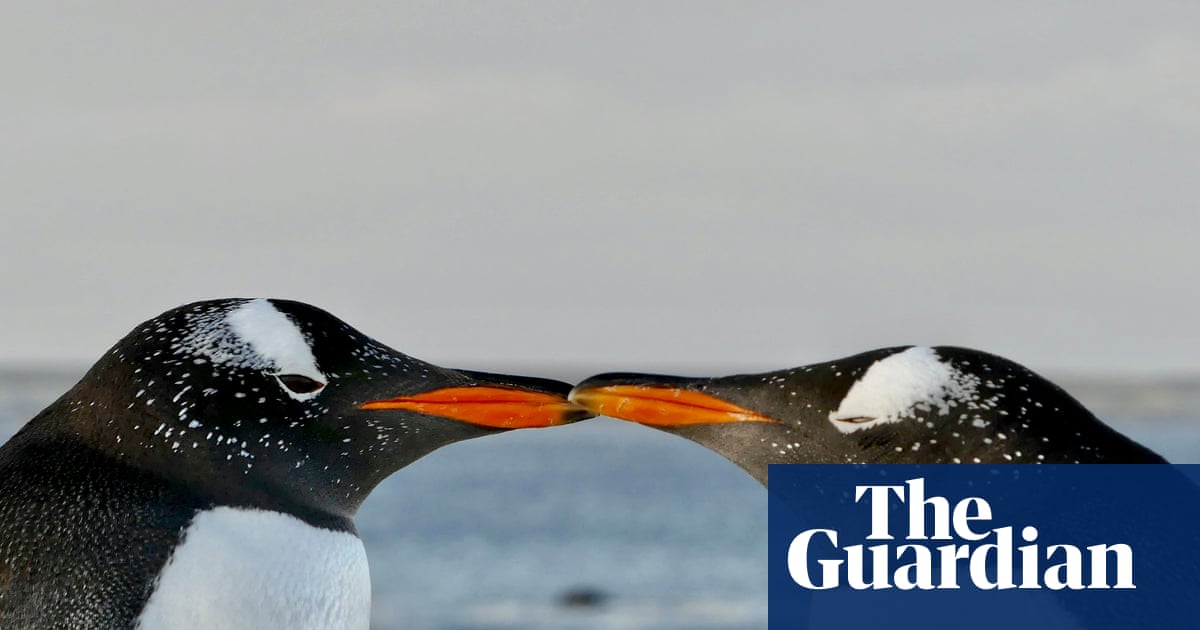In 1998, Roy and Silo, a pair of male chinstrap penguins at Central Park Zoo in New York, were given an abandoned egg to incubate after zookeepers observed them performing mating rituals together. For 34 days, they took turns sitting on it. When the egg hatched, the story became a viral sensation. The New York Times celebrated “A Love That Dare Not Squeak Its Name”. Roy, Silo and their daughter Tango became the subject of a LGBTQ-friendly children’s book, And Tango Makes Threeby Justin Richardson and Peter Parnell.
Biology professor Nathan Lents remembers receiving copies of Tangoas a gift when he and his husband became foster parents. Fast-forward to the present day, and Tango tops Pen America’s list of the most frequently banned picture books in the US. It was part of a high-profile lawsuit in Nassau County, Florida, and was designated for pulping by officials in Singapore. In 2025, it’s apparent that “conventional categories for gender identity and expression, and sexual attraction and romanticism, are just not cutting it any more”, Lents writes. Queer, non-binary, transgender, polyamorous – terms that were perhaps once obscure are here to stay. But at the same time, a powerful backlash is under way.
This bookisn’t a directly political text, but its colourful tales from the animal world do have a point of view: biology, Lents argues here, comes down strongly against rigid categories. The story of sexual evolutionis one of experimentation and constant improvisation, and that, he says, goes a long way to explaining why human sexual norms seem to be undergoing a transformation: “I assert that this moment of sexual turmoil is actually a rediscovery of the much more expansive relationship with sex that our ancestors once had and that other animals enjoy,” he writes.
What follows is an entertaining and informative romp through mating strategies in nature. From Komodo dragons’ virgin births to the bilateral sperm transfer of hermaphroditic slugs, The Sexual Evolution chronicles a “wondrous variety” of behaviour in the animal world. Garter snake orgies, gender-masking hyenas, lusty bonobos and the lesbian Laysan albatrosses of Hawaii – this book has it all.
All that diversity is fascinating, and frequently funny. Take the family structures of clown fish like the ones in Pixar’s 2003 hit Finding Nemo. The film tells the touching story of a dad fish’s quest to be reunited with his son after the mum is eaten,but “if the movie were biologically accurate, the story would have proceeded a little differently”, says Lents. “Upon the loss of his mate, Marlin would have transitioned to female. By the time Marlin reunited with Nemo, she would have been his mother.” And then? Once Marlin and Nemo established a new home, they would have begun to breed – together.
While same-sex penguin unions might be sweet, clearly things tend to work a little bit differently in the non-human world than they do in our own. Animals can’t tell us why they mate or pair or behave the way they do. And humans have an unhelpful tendency to project their own biases on to their observations – something that is evident in the long history of sexism in biological sciences. “As the mostly male scientists through the last two centuries looked around at the animal world, they were all too eager to find validation for male dominance in human society,” Lents notes. For this reason, The Sexual Evolution is careful to avoid making simplistic comparisons, especially when it comes to the sex lives of other primates, such as chimps and bonobos.
Unfortunately, the book’s final chapters, which turn to our own relationships, are its least compelling. Can we really draw any conclusions about human sexuality from our piecemeal knowledge of sexual norms in hunter-gatherer societies? Or from the swinging seductions of highly successful Soviet spies? Not all stories make useful parables. The Sexual Evolution is at its strongest when it’s simply revelling in kaleidoscopic tales of how other species do it. As Lents points out: “The natural world is a constantly churning diversity-generating machine, and the natural history of sex reflects that.”
Sign up toInside Saturday
The only way to get a look behind the scenes of the Saturday magazine. Sign up to get the inside story from our top writers as well as all the must-read articles and columns, delivered to your inbox every weekend.
after newsletter promotion
The Sexual Evolution: How 500 Million Years of Sex, Gender and Mating Shape Modern Relationships by Nathan H Lents is published by Canongate (£20). To support the Guardian order your copy atguardianbookshop.com. Delivery charges may apply.
